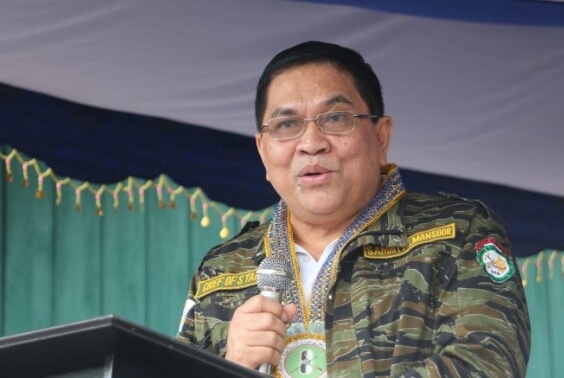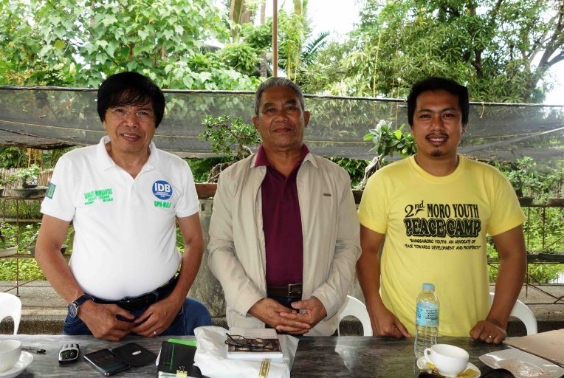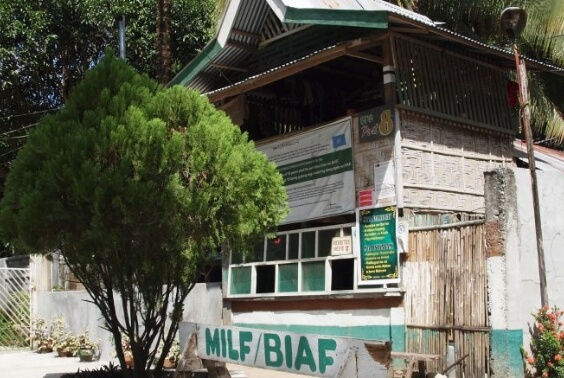- SOUTHERN PHILIPPINES
The Role of Islamic Diplomacy in the Mindanao Peace Process
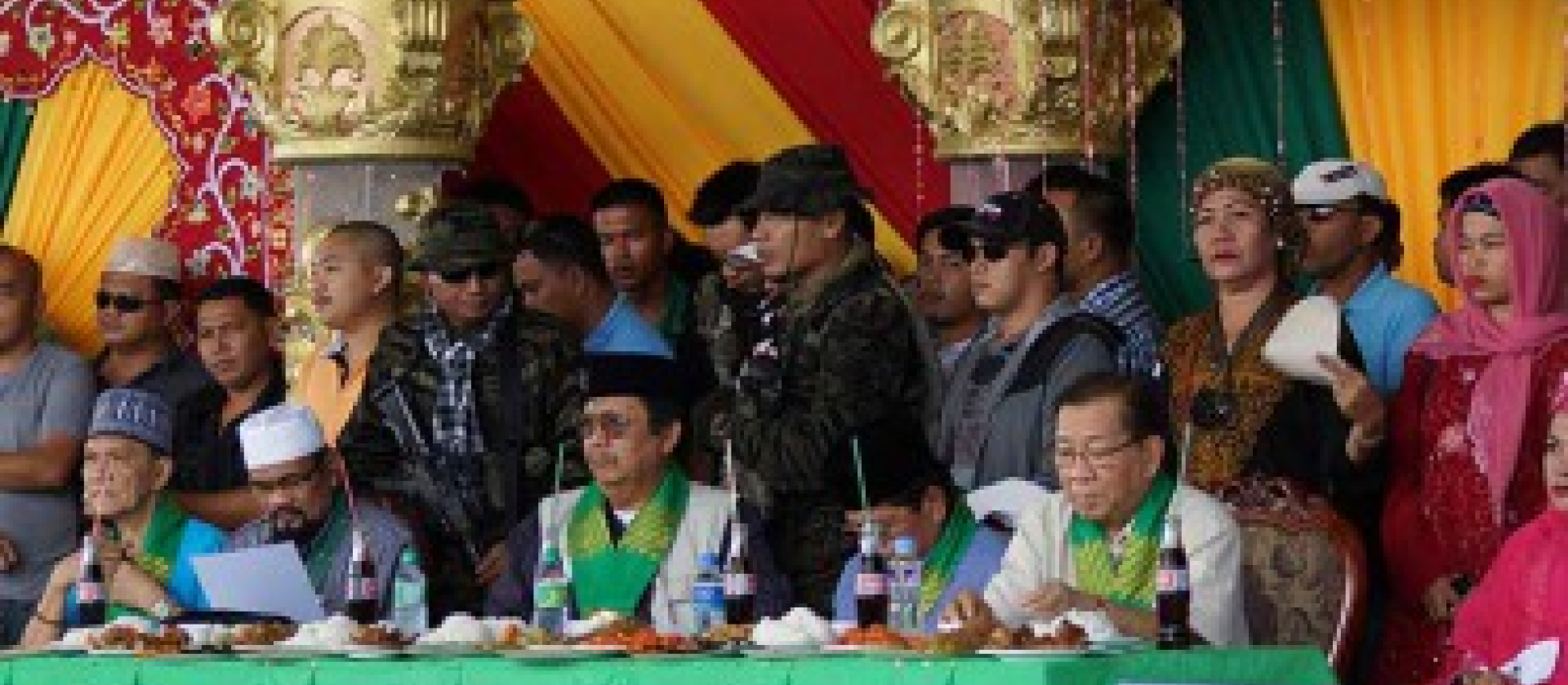
INTRODUCTION:
This article deals with the mediation or facilitation role of Muslim entities, most notably Malaysia and the Organization of Islamic Cooperation (OIC), in the peace negotiations between the Government of the Philippines (GPH) and the Moro Islamic Liberation Front (MILF) “to solve the Bangsamoro problem” in the Muslim Mindanao region of the Southern Philippines. There is in fact a broader Mindanao peace process that also includes the implementation of the 1996 Final Peace Agreement (FPA) between the GPH and the Moro National Liberation Front (MNLF). There has also been Islamic mediation by the OIC in the latter peace process and there is an emerging correlation between this process and the currently pivotal, nearly-culminating peace negotiations with the MILF. However, we are here focusing on the latter negotiations. While we focus here on the mediation or facilitation role of Muslim entities, we should not lose sight that a broader Islamic diplomacy also covers ceasefire monitoring, humanitarian assistance, rehabilitation work and socio-economic development in the Mindanao peace process. Finally, our focus here is on the more recent 2010-13 period under the incumbent Aquino administration in the Philippines.
The Muslim entities whose mediation roles in the GPH-MILF peace negotiations we cover here are: Malaysia as the third-party facilitator; the OIC, now with observer status, and Saudi Arabia, Turkey and the Indonesian NGO Muhammadiyah as members of the International Contact Group (ICG); and, Libya and Indonesia as two countries which have historically played roles in the peace negotiations with the MNLF and the MILF, although Indonesia’s role, like that of the OIC (of which Indonesia is chair its Peace Committee for Southern Philippines), has been mostly limited to the peace process with the MNLF. Our perspective on the mediation roles of these Muslim entities is necessarily limited as we are not ourselves part of the negotiations and mediation. We are, however, privileged to have some special sources in those processes, whose identities we cannot reveal. Other sources are publicly available, such as documents released from those processes and good media reportage of them, notably by Carolyn O. Arguillas of the on-line MindaNews. We hope to give a good sense of the mediation roles and impacts of these Muslim entities, and conclude with recommendations in light of the perceived situation of the peace process.
It must be made clear that the involvement of Muslim entities in the GPH-MILF peace process is only a “subset” of a broader and multiple international involvements, the most in number ever for any Philippine peace process and possibly still increasing. These multiple international involvements go beyond the OIC circle and has included, at various times and extent, the United States, the United Nations, World Bank, International Committee of the Red Cross (ICRC), and other international organizations. 1 Also the ICG, “the first ever hybrid facilitation support body in that it has states and international NGOs working together” also includes the United Kingdom (UK), Japan, The Asia Foundation (TAF), Centre for Humanitarian Dialogue (HDC) and Conciliation Resources (C-R). In the International Monitoring Team (IMT), aside from Malaysia which heads and mainly staffs it, there are also Brunei (still another Muslim country), Norway and the European Union (EU). These are all part of “an increasingly sophisticated peace support architecture,” 2 that also has local components. The level of internationalization of the mediation of the conflict is much more than the level of internationalization of the conflict itself.
ISLAMIC DIPLOMACY
The term “Islamic diplomacy” is used here mainly to refer to the mediation role of Muslim entities in the Mindanao peace process. The OIC’s mediation of the conflict between the Government of the Republic of the Philippines (GRP) and the MNLF since 1972 can be contextualized with the principles of Islamic diplomacy. 3 Kiyasa (Islamic diplomacy) and sifarah (peaceful settlement) are part of siyar (Islamic international relations or law). Even as siyar is evolving away from the classical Islamic external relations framework of jihad (often misunderstood in its strict translation as “holy war”), the OIC had already employed modern interpretations of siyar alongside UN-type means of pacific settlement in its mediation of the GRP-MNLF conflict. The latter dimension alone is insufficient to fully understand the OIC mediation. 4
It was during the crucial third and finally successful attempt at GRP-MNLF peace negotiations from 1992 to 1996 that Indonesia became the new chair of the OIC Ministerial Committee of the Six (formerly the original Quadripartite Ministerial Commission, and currently the Peace Committee for Southern Philippines) in 1993, tasked with mediating those negotiations relevant to the “Question of Muslims in Southern Philippines.” This was in recognition of the Asian context of the Filipino Muslim problem. Indonesian diplomacy is indeed not so much Islamic as it is Asian, or more precisely oriented to the Association of Southeast Asian Nations (ASEAN). The then Indonesian Ambassador to the Philippines, when speaking of the Muslim approach, emphasized the “importance of approach, not only the Muslim” and that while all may be considered Muslim, the Indonesian approach is “different from the Saudi or Libyan approach.” 5 In Philippine President Fidel V. Ramos’ book on the said third round of negotiations, his epilogue cites lessons learned, one of which is: “The ASEAN approach of Musjawarah (consultation) and Mufakat (consensus) proved to be the most productive.” 6
The term “Islamic diplomacy” is also used to refer to a form of struggle that the MNLF and MILF engaged in, along with two other forms of struggle, i.e. armed struggle and peace negotiations. It was used in the sense of international solidarity work with the OIC and Muslim countries and entities to gather political and material support for either for the armed struggle or the peace negotiations or both. There was a time when such Islamic diplomacy was the main form of struggle waged by the MNLF, with the OIC as the main arena for this, as it was the OIC that brought the MNLF to engage in peace negotiations. It was never that way with the MILF, which has since 1997 been waging peace negotiations as its main form of struggle, although this was backed by a significant military capacity to wage armed struggle as well. In reverse case of the MNLF, it was the peace negotiations that brought the MILF into international diplomacy, starting not with the OIC but with the neighboring Muslim country of Malaysia in 2001.
MALAYSIA
Malaysia is the third-party facilitator of the GPH- MILF peace negotiations and the most important international involvement in it. Malaysia’s facilitation, aside from being host, usually involved the following functions: serving as go-between conveying positions of the parties; providing a conducive atmosphere, venue and facilities; having a presence in the talks as “referee” and to witness commitments and understandings; helping bridge differences by shuttling between the parties; administering the talks; and, recording and keeping minutes, including details of what had actually been agreed upon. For the most part in the past 12 years, Malaysia has been effective, efficient and successful in this role, according to the general feedback from the negotiators of both sides as well as close observers, like those in the ICG in more recent years. The common Malay culture and temperament among the key players no doubt eased Malaysian facilitation, and its steady role may be described as the one constant in the ups and downs of the Mindanao peace process. 7
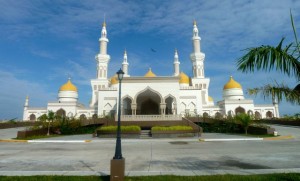
The Framework Agreement on the Bangsamoro (FAB) in October 2012 was a major breakthrough, the signing ceremony of which was graced by both the Philippine President Benigno Aquino III and the Malaysian Prime Minister Najib Razak. No arguing against success, this has secured Malaysia’s role as facilitator of these negotiations. But during the early months of the Aquino administration (actually beginning in the last years of the preceding Arroyo administration), the GPH had expressed its discomfort with the then Malaysian facilitator Datuk Othman Bin Abd Razak whom the GPH considered being partial to the MILF. During the impasse over this, some quarters in the GPH and among Filipino opinion makers were pushing for the replacement of Malaysia itself by Indonesia as a more “honest broker.”
This issue was resolved by the replacement of Othman by a new Malaysian facilitator, Tengku Dato Ab Ghafar bin Tengku Mohamed, by the 21st Round of the Formal Exploratory Talks in April 2011. Knowledgeable sources (not from the GPH) say that the issue was not really about whose personality or style suited the GPH more between Othman and Tengku, but more to do with GPH’s coming to terms with the need for a third-party facilitator like Malaysia, which the MILF was adamant to keep, for the process move forward. Malaysia had proven itself in this regard in being an “honest broker,” and the GPH changed its attitude towards it. Tengku’s taking over doubtless helped the GPH to change its attitude, but the facilitation staff and its institutional memory has remained the same. That the Malaysian facilitation team came from the Office of the Prime Minister (OPM)-Research Department (RD), which is actually its intelligence branch, also initially bothered the GPH peace panel under President Aquino which felt that the facilitation should be handled by the Ministry of Foreign Affairs. But the current GPH panel has since got over its misgivings about this and has learned to live with it.
Tengku, in a rare interview he gave to the Malaysian media, where he is described as “the consummate deal maker, calm, soft-spoken, low-key and comfortable in the background… the first to tell you that discretion is the key to success in any peace negotiation,” gave these insights into his facilitation as well as about the negotiations:
“What we did was, we agreed on the principles and they would discuss them in detail. When I move the principles in, I don’t get involved in the discussions. I opened the way for them to discuss. I also had to make them feel at ease. During one instance, all we did was sit on a sofa, had coffee and talked freely. In that three-hour session, we touched roughly on the points. There was no taking down of notes. It was partly to get that sense of friendliness… No, I never issued ultimatums. The government and the MILF had their own positions and I had mine. Nobody can say ‘You do this, you do that.’ It required a lot of compromises and understanding. My role was that of the problem solver.
“Patience, endurance and the willingness to listen are key. What we wanted to accomplish was important. It was important that we understood the body language, the nuances and the toughest of all, coming from a federal kind of system, we had to understand the presidential system with its different set-up and terminologies.
“From April 2011, right up to April 2012, it was constantly trying to make them comfortable and trying to win the confidence of the respective negotiators —the Philippine government and the MILF. That was important, getting their confidence.
“I also closed myself up because you cannot discuss negotiations publicly. You cannot disturb the feelings of the two sides. It is not right for the facilitator to talk during on-going discussions. That was why I was very unwilling to speak to you.
“This was driven in large by the aspirations of the Bangsamoro. When we started last year, both sides changed their approach. There was more engagement with the people, consultations, advocating and arriving at a consensus. Everybody was involved, the inclusiveness of the process made it strong. So, it was a matter of arranging everything in a basket, so to speak.” (Quoted from interview article, New Straits Times) 8
By various accounts over the years, Malaysia’s role has actually moved beyond facilitation towards mediation. This includes, among others, devising or promoting a solution, loosening the tension between the parties, creating an atmosphere conducive to negotiation, being an effective channel of information, and providing the parties with suggestions. 9
In his speech at the 15 October 2012 signing ceremony for the FAB held at the Philippine presidential palace, Malaysian Prime Minister Najib Razak said, among others, that Malaysia was ready to help as the Philippines’ partner for peace. He said Malaysia was willing to offer training and education in particular: “To all the people of the Philippines, we will stand with you to make this agreement work…. It’s my hope that this agreement brings about a new time of moderation.” A joint statement issued by the Philippines and Malaysia described Najib’s visit as a “significant milestone” in bilateral relations and “signals a new phase of deeper and more robust ties between the two countries.”
Post-FAB, however, two problems about Malaysia’s role as the third-party facilitator have come to the fore by this first quarter of 2013. First, the most vocal opposition earlier on to the FAB and Malaysia’s role came from MNLF Chairman Nur Misuari, signatory to the OIC-brokered 1976 Tripoli Agreement and 1996 FPA between the GRP and the MNLF. These agreements had already provided for an Autonomous Region in Muslim Mindanao (ARMM), but President Aquino has declared it as a “failed experiment” after 16 years of problematic implementation, and FAB would replace it with a new autonomous political entity called Bangsamoro. Second, the resurrection of the “Sabah claim” due to a standoff and armed hostilities there arising from an armed occupation of a small village by the “Royal Army” of the residual Sulu Sultanate led by the Kiram family. Aside from its impact on Philippine-Malaysian relations, this again has raised the usual question about Malaysia as an “honest broker” in the GPH-MILF peace negotiations, which is now also being assailed for ignoring the “Sabah claim” of the sultanate and, for that matter, of the Philippines. Along with Misuari’s opposition to the FAB and the skepticism of clan-based politicians in the Sulu archipelago towards the peace process, 10 new development regarding the “Sabah claim” is seen by the MILF in particular as part of the problem of “peace spoilers.” These two problems raise valid questions about the sustainability of the FAB (and the expected ensuing comprehensive agreement) because of significant divisions in the Bangsamoro constituency. Not all is quiet on the Western front.
ORGANIZATION OF ISLAMIC COOPERATION (OIC)

It is with that backdrop of significant Bangsamoro divisions, particularly between the MILF and the Misuari-led MNLF, that the relatively small observer role of the OIC in the GPH-MILF peace negotiations bears noting. It was at the 26th Round of Exploratory Talks, which ended on 21 March 2012, that the parties approved the request of the Office of the Secretary-General (OSG) of the OIC “to sit as observer.” The significance of this arises from the view and expectation that only the OIC has the clout to bridge the MILF and the Misuari-led MNLF and, thus, also their respective peace agreements with the GPH. Mindanao historian and former GPH peace negotiator Professor Rudy Rodil commented that the OIC was the “perfect mediator between the MNLF and MILF.” 11 In this regard, it is well known that historically the OIC has much more hold on the MNLF than on the MILF, while the MNLF has much more influence than the MILF has in the OIC, particularly with its crucial OSG. Now, more than ever, “a new struggle [or goal] to achieve Bangsamoro unity to ensure lasting peace has emerged among Moro revolutionary groups.” 12 This has become a major imperative for the viability and sustainability of a comprehensive peace settlement on the Moro front that, if the OIC were to accomplish even only MNLF-MILF unity (not merger), then that would be its best contribution.
Note that it is the OSG in particular, not the OIC as a whole nor its Peace Committee for Southern Philippines (PCSP) which focuses on the GRP-MNLF peace process, that was granted observer status in the GPH-MILF peace negotiations. A less obvious significance of this observer status is that it would widen the OIC’s horizons on the “Question of Muslims in Southern Philippines” and on discerning which between the MNLF and the MILF is the more legitimate representative of the Bangsamoro people. Finally, the presence of the OIC in the GPH-MILF peace negotiations adds major clout to its already considerable complement of international guarantors for resulting peace agreements.
But since the entry of the OIC, or more precisely the OIC-OSG, as observer in the GPH-MILF peace negotiations, it has attended only one of the ten rounds of the almost monthly exploratory talks held in Kuala Lumpur from April 2012 to February 2013 (although OIC Secretary-General’s Special Envoy for Peace in Southern Philippines, Ambassador Sayed Al Masry, was once on his way to Kuala Lumpur but had to return to Egypt on an emergency). According to knowledgeable sources, they are understaffed for attending these exploratory talks regularly. That said, the OIC Secretary-General Professor Ekmeleddin Ihsanoglu attended the FAB signing ceremony and met on its sidelines with President Aquino.
The OIC’s main line so far, since the breakthrough FAB, has been to link or harmonize the FAB with the 1996 FPA. The MILF has given mixed signals about this. On one hand, the MILF says that the FAB or its ensuing comprehensive agreement can embody or incorporate the full implementation of the 1996 FPA; on the other hand, the MILF also says that the same is not possible because their respective frameworks are not congruous.
The OIC’s said line or related messages are mainly made not through its observer role in the GPH-MILF peace negotiations but through its high-level annual Resolutions of the Council of Foreign Ministers (CFMs) “On the Question of Muslims in Southern Philippines.” The latest Resolution, No. 2/39-MM, at the 39th CFM of the OIC in Djibouti last November 2012 (post-FAB) is particularly instructive in showing the latest OIC discourse on the matter, including a rather MNLF-skewed view (almost seemingly MNLF-drafted), and deserves extensive quotation. Its Paragraphs 1 to 4 show the premium that the OIC continues to give to the 1996 FPA, which is understandable because it is the OIC’s “baby.” Paragraph 5, then, pushes the GPH to make certain flexible concessions to the MNLF, including for the GPH “to sponsor the request by the MNLF on conducting a new plebiscite,” as all relate to MNLF demands regarding the problematic implementation of the FPA and expansion of the autonomous region:
Para. 5: Calls on the GPH to show flexibility that would allow progress on the pending major difficulties, namely the size of the autonomous region, transitional mechanism or transitional period arrangements and an agreed definition of strategic minerals, also calls upon it to sponsor the request by the MNLF on conducting a new plebiscite under neutral supervision to consult the population on whether they are willing to join the autonomous rule region; [underline by author]
This is followed by Paragraph 6 on the OIC’s latest MNLF-MILF unity efforts, interestingly indicating the MILF’s acceptance of the OIC proposal for institutional coordination which the MNLF has yet to accept:
Para. 6: Commends the efforts of the Secretary General in holding the second coordination meeting in December 2011 between the leaderships of the MNLF and MILF to continue their joint coordination and work to achieve peace and development for the people of Bangsamoro and calls for the continuation of dialogue to form the proposed Bangsamoro Coordination Forum (BCF) and requests Secretary General to present a progress report to the next Session. Commends MILF’s acceptance of the proposal and urges MNLF to accept the proposal as soon as possible to enable institutional and orderly coordination between them. [underline by author]
The BCF is just the latest in several such attempted MNLF-MILF unity mechanisms. During earlier phases of the GPH-MILF peace negotiations, some on the GPH side viewed the MNLF-MILF unity efforts as “being actually a parallel negotiation.” 13 It is only in Paragraph 7 that the FAB comes into the picture of the latest OIC-CFM Resolution which expresses hope that it not suffer the fate of certain past peace agreements both with the MILF and the MILF:
Para. 7: Welcomes the conclusion of the Framework Agreement between GPH and MILF signed October 15, 2012 and expresses the hope that it shall be implemented in good faith and that its fate would be different from that of its predecessors which were either retracted, such as the Memorandum of Agreement concluded with the Moro Islamic Liberation Front (MILF) which was not implemented due to a Philippine Constitutional Court order, or the Peace Agreements of 1976 and 1996 concluded with MNLF which have not been fully implemented so far. [underline by author]
Paragraph 8, “Commends the role of the Government of Malaysia as the third party facilitator” in the GPH-MILF peace negotiations and mentions the presence of the OIC Secretary- General Professor Ihsanoglu, among others, at the FAB signing ceremony. Malaysia is after all an OIC member and also of the OIC-PCSP. The second prefatory paragraph of the Resolution also gives credit to Libya and Indonesia as well as the OIC Secretary-General in the GRP-MNLF peace process, thus: “Commending the role played by Libya in reaching the Tripoli Agreement in 1976 and instrumental the role [sic] of the Republic of Indonesia as Chair of the PCSP and all its members, as well as to the Secretary-General’s efforts…”
Most telling are Paragraphs 9 and 10 in their attempt to put the FAB in its proper place, as it were, in relation to the OIC-favored 1996 FPA and even the 1976 Tripoli Agreement:
Para. 9: Invites all parties to improve on the Framework Agreement by linking it to the Peace Agreement of 1976 and abiding by the area of the autonomous region stipulated in this Agreement and reconfirmed in the Final Peace Agreement of 1996. Para. 10: Calls upon the Secretary General to hold another session of the tripartite meeting at the earliest to contain any impacts that may result from the Framework Agreement between GPH and MILF, save the 1996 Agreement and link it to the Framework Agreement, and develop a mechanism between MNLF, MILF and GPH to oversee the implementation of these two agreements i.e. the agreement with the MILF and the agreements with the MNLF. [underline by author]
It appears here that the OIC views the FAB as inferior to, and has to be “improved on” in accordance with, the 1996 FPA (which must be “saved”) and even the old 1976 Tripoli Agreement. The purported superiority of the latter two OIC-brokered peace agreements lies in “the area of the autonomous region stipulated”—14 provinces and 9 cities—compared to the FAB’s core area of 5 provinces, 3 cities and 6 municipalities. But the “14 provinces and 9 cities” are a Misuari pipedream because most of these are already Christian majority areas and they have voted consistently against inclusion in a Muslim autonomous region in several plebiscites. The FAB is more realistic in aspiring for the inclusion of only Muslim majority areas in the vicinity of, but not yet under, the existing ARMM. The undue focus by the MNLF and the OIC in expanding the territory of a Muslim autonomous region even to provinces and cities where it would be unrealistic (because the Christian majority there would not accept it) overshadows the more important substance of the autonomy in terms of power-sharing and wealth-sharing, where it is clear that the FAB and its ensuing comprehensive agreement in fact would “improve on” the 1996 FPA (that subsumed the 1976 Tripoli Agreement).
Since the FAB would appear to provide better autonomy than that under 1996 FPA, it is rather strange that the OIC aims “to contain any impacts that may result from the Framework Agreement between the GPH and the MILF” and “to save the 1996 Agreement” even if the FAB would be better for the Bangsamoro people. On the other hand, the OIC’s call to “develop a mechanism between MNLF, MILF and GPH to oversee the implementation of these two agreements” is something that may be needed in the near future to purposefully correlate not only the two agreements but also the two Moro liberation fronts. But given the MNLF’s animosity toward Malaysia, it is only the OIC that can effectively mediate the MNLF-MILF axis and, for that matter, the MNLF-MILF-GPH axis. Worrisome is an unofficial or semi-official MILF comment against the OIC-proposed MNLF-MILF-GPH mechanism “as [an] unnecessary mechanism that will only complicate the gains of the GPH-MILF Framework Agreement on the Bangsamoro.” 14 This carries an undertone of MILF vanguardism or exclusivity that can only be counter-productive to building a unified Bangsamoro peace constituency.
Finally, there is Paragraph 11, which is what the MILF highlights about the Djibouti Resolution:
Para. 11: Requests the Secretary General to invite the representatives of the Moro Islamic Liberation Front (MILF) to participate in ministerial conferences as guest, in coordination with the hosting state, in order to facilitate coordination between the two fronts.[underline by author]
The MILF website Luwaran says: “It will be recalled that all past invitations to the MILF to attend OIC’s conferences had been [as] part of the MNLF delegation, which has been granted ‘observer status’ in the OIC. However with this new status, the MILF can be invited separately from the MNLF” 15 [underline by author]. Incidentally, it was at the 27th CFM of the OIC in Kuala Lumpur in 2000 that the MILF first attended such conferences as part of the MNLF delegation and that the Philippine government first attended also as a guest. 16 So the MILF, since 2000 (particularly after an “all-out war” by the Philippine government against it), has come a long way and of age in the OIC (particularly after the 2012 FAB).
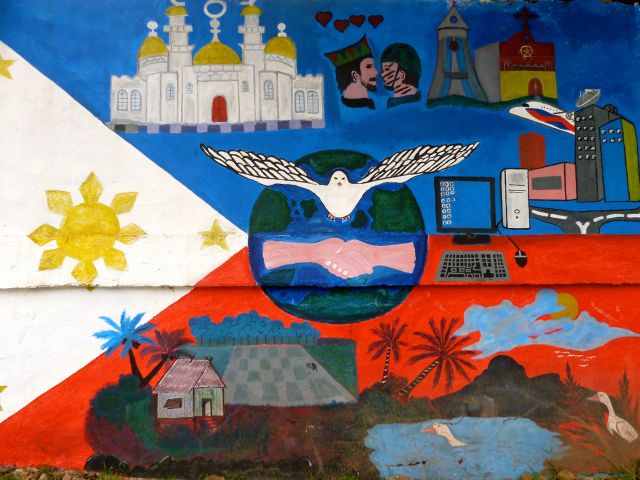
OTHER MUSLIM ENTITIES
After the main players Malaysia and the OIC, there are the secondary players or supporting cast: Saudi Arabia, Turkey, the Indonesian NGO Muhammadiyah as ICG members, and Libya and Indonesia. First of all, it may be good to enumerate the mandated functions of the ICG, which is “complementary to the existing facilitation mechanism and peace process architecture:”
1. To attend and observe the face-to-face negotiations upon invitation by the Parties with the concurrence of the Facilitator;
2. To conduct visits, exchange views, and give advice on discreet basis in coordination with the Parties and the Facilitator;
3. To seek out the assistance of recognized experts, resource persons or groups on specific issues in order to support the Parties; and
4. To meet upon request by any of the Parties at various levels to help resolve substantive issues based on agreed agenda. 17
The above has all been done and, by all indications, the ICG has been very useful for the negotiations. Of course, the participation and contributions vary among the ICG members. The information we have and share here is from knowledgeable sources but is also scant.
—Saudi Arabia: Saudi Arabia’s participation has been very limited and is more symbolic. Their embassy in Manila has never joined an ICG meeting. Their embassy in Kuala Lumpur occasionally sends a delegate to attend the peace talks but briefly, for just a few hours.
—Turkey: Turkey’s embassy in Manila does not have the human resources to do much, but they have on occasions attended ICG meetings in Manila. Their embassy in Kuala Lumpur has sent a delegate to most peace talks, occasionally staying for almost the full duration of the talks, which can be from three to five days. At the Ministerial Meeting Preparatory to the 12th Islamic Summit Conference of the OIC in Cairo this February 2013, Turkish Foreign Minister Ahmet Davutoglu welcomed the FAB, congratulated Malaysia for it, and supported the pending application for observer status of the Philippines.
—Muhammadiyah: Muhammadiyah accepted the invitation to join the ICG as “in line with the mission and identity of Muhammadiyah as an Islamic movement.” 18 They are very committed as part of the ICG and never miss a single round of peace talks. They have convened multiple activities in Indonesia to increase social awareness and political support for the Mindanao peace process. They have invited the MILF, GPH and ICG to peace events in Indonesia, and have done some bridging between the MILF and MNLF. They have conducted exploratory visits to Mindanao to identify how best they can contribute with their expertise in human development. Their major constraint is their lack of a formal mandate to do international collaboration, and therefore have limited human and financial resources.
—Libya: Libya used to be like a secondary or supporting (to Malaysia) third-party facilitator in the GPH-MILF peace negotiations, but all this stopped with the fall of the Gaddafi regime in October 2011. Although there is word that Libya may return to the talks, it is not likely to regain its previous role. That role was very much identified with Gaddafi himself as his personal pet project, and Libya now has other priorities and is certainly not well placed to play that role anymore. Besides there may not be much need for further facilitation, given the expected conclusion of negotiations on a comprehensive agreement.
—Indonesia: Indonesia has been trying to increase its presence on the GPH-MILF peace front but some say this is hampered by its role in the GPH-MNLF peace front and the 1996 FPA, also known as the “Jakarta Agreement.” Indonesian President Susilo Bambang Yudyohono signified their intention to join the IMT that monitors the GPH-MILF ceasefire during a state visit of Philippine President Aquino in 2011. Indonesia’s intention is “to reciprocate the Philippine peacekeeping assistance in Aceh” but it has yet to formally submit this intention to the Philippine government. 19 Potentially, Indonesia can play a more significant role given its being chair of the OIC-PCSP. At least five other members of the PCSP are also involved in the GPH-MILF peace front in varying degrees: Saudi Arabia (which is the PCSP vice-chair), Libya, Malaysia, Brunei and Turkey, in chronological order of involvement in the PCSP. 20
—ASEAN: At this point, something must be said about the ASEAN factor, even though this is not itself a Muslim entity, with only three Muslim countries among its ten member nations. It is interesting to note that the East ASEAN bloc of Brunei, Indonesia, Malaysia and the Philippines (BIMP)—with three Muslim countries out of the four—configures in the Mindanao peace equation. One analyst has noted the FAB’s implications for ASEAN: “With the signing of the Framework Agreement, economists predict EAGA [East ASEAN Growth Area, which is equivalent to BIMP] will push for more socio- economic cooperation…. it signals a new phase by which the Manila government and the MILF can now work as partners in the implementation of its provisions not only for the people of the Philippines but also for the ASEAN region.” 21
In the crucial 5th CFM of the OIC in Kuala Lumpur in 1974, it was Indonesia and Malaysia which pushed for the “framework of the national sovereignty and territorial integrity of the Philippines” to balance the call for the Philippine government to negotiate with the MNLF, in the face of Libyan and Pakistani advocacy for OIC intervention in behalf of Muslim minorities in non-member states. 22 Indonesia and Malaysia were “anxious to prevent the interference of other countries (including the Arabs) in Southeast Asia,” 23 which was starting to cope with its own regional stability through the emergent ASEAN— which to these two Muslim states was the higher value, not the OIC and, much less, Islamic solidarity. 24
At the 38th CFM of the OIC in Astana in 2011, Indonesian Foreign Minister Dr. R.M. Marty M. Natalegawa said that, “Indonesia continues to urge the OIC to grant observer status to the Philippine Government, as this will demonstrate how the OIC engages and cooperates with non-member countries with significant Muslim minority populations” [underlines by author]. If some kind of GPH-MILF-MNLF mechanism would be needed eventually to sort out the two tracks represented by the MILF/FAB and the MNLF/1996 FPA, then Indonesia rather than Malaysia or the OIC Secretary-General might be the most widely acceptable mediator. We should recall that before Malaysia entered the GRP-MILF peace negotiations as third-party facilitator in 2001, Indonesia nearly took on that role with an offer to mediate through no less than its President Abdurrahman Wahid, with the assent from his acquaintance, MILF Chairman Salamat Hashim, but this was blocked by then Philippine President Joseph Estrada who had unleashed an “all-out war” against the MILF in 2000, 25 thus scuttling the negotiations.
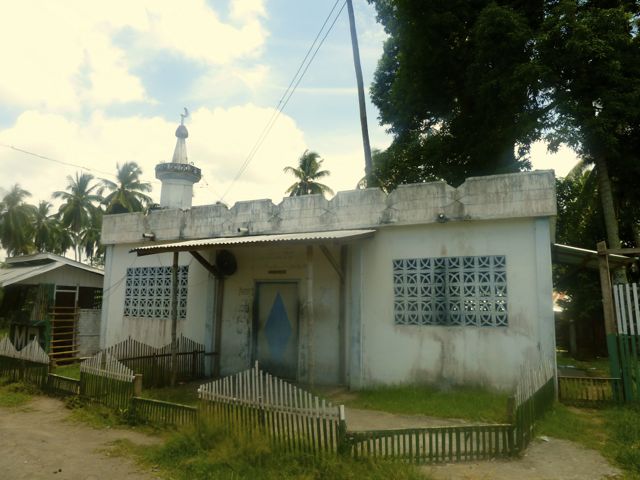
SOME RECOMMENDATIONS
Barring unforeseen circumstances, the GPH-MILF peace negotiations should culminate with a comprehensive agreement that fleshes out the Annexes of the FAB in the very near future. That might be the easiest part of the road map outlined by the FAB. The next substantive step in that road map is the drafting of the Bangsamoro Basic Law (BBL) by the Transition Commission (TC), its members already in place. But it has been noted that there is “no MNLF member” in the TC, as “the MNLF chose not to endorse a member” 26 designation either by the GPH or the MILF. This should be a matter of major concern, sounding alarm bells, because an antagonistically divided Bangsamoro stakeholdership in the BBL will simply not do for its viability and sustainability.
Things are already at the stage of drafting the organic law for a new autonomous political entity for the Bangsamoro based on a peace agreement, yet a significant Bangsamoro stakeholder, the MNLF (with a constituency in the South-western archipelagic half of the entity’s core territory) is currently “not in the same boat,” and even currently opposing it. This has to be sorted out before Bangsamoro autonomous arrangements are “entrenched” into law. But the definitive sorting out of the two tracks represented by the MILF/FAB and the MNLF/1996 FPA is not clearly indicated in the FAB road map now being followed. And yet it has become increasingly clear that Bangsamoro unity, with MILF-MNLF unity as the litmus test, should already be treated as a goal in itself of the peace process 27 and no less than part of solving the Bangsamoro problem.
This would be not only a matter of sorting out two peace agreements (the FAB / comprehensive agreement and the 1996 FPA) but also the relations between the MILF and the MNLF. The newly appointed TC would not be able to do this, not only because there is no MNLF member there, but also because the said sorting out is not in its mandate, even if there may be TC members who know the MNLF perspectives. The said sorting out can only be done by a GPH-MILF-MNLF mechanism mainly to sort out the two peace agreements and a MNLF-MILF unity mechanism to sort out the intra-Moro (some might say “Moro-Moro”) relations. In both mechanisms, it would appear that any necessary mediation (and it appears to be necessary) would have to be by the OIC. It cannot be by Malaysia anymore because of the MNLF’s aversion to Malaysia, exacerbated by the current Sabah stand-off. This is where Indonesia, as an OIC member (its PCSP chair at that) mediator that appears to be the most commonly acceptable to the GPH, MILF and MNLF, could come in. Indonesia would be more commonly acceptable than the OIC-OSG because of the MNLF’s perceived hold there. The OIC has, of course, already proposed the Bangsamoro Coordination Forum (BCF), which the MILF has accepted but the MNLF not yet. Aside from this, the two Moro liberation fronts should be able to hold a dialogue and negotiate even just between themselves, without an OIC mediator. There is also the just as important domestic intra-Moro effort of Bangsamoro civil society to work for MNLF-MILF unity. 28
Actually, as early as 2000, a Filipino political scientist once wrote about the need for a three-cornered “GRP-MNLF/MILF peace process” leading to “a new peace agreement involving the GRP, MNLF and MILF.” 29 Filipino-American academic’s proposal in 2004 was to establish a GRP-MNLF-MILF Commission on Bangsamoro self-determination with an MNLF-MILF working group within it, to review the existing ARMM and determine what key changes may be necessary. 30 So the OIC’s 2012 call to “develop a mechanism between MNLF, MILF and GPH to oversee the implementation of these two agreements” is not really a new idea. The unofficial or semi-official MILF comment against this, “as [an] unnecessary mechanism that will only complicate the gains of the GPH-MILF Framework Agreement on the Bangsamoro” is understandable, given those gains and the limited time frame of its road map. But these gains could also come to naught if the MNLF problem (to put it bluntly as that) is not solved. Better to address this problem now early in the transition rather than as a bigger problem later down the road. This urgent task should have its own road map, which of course should interlink with the FAB road map, and thus contribute thereto. Even road maps can be works in progress. If there are to be institutions and mechanisms of Bangsamoro self-governance, there too should be institutions and mechanisms of Bangsamoro unity.
Islamic diplomacy, or more precisely Muslim entity mediators led by the OIC, has a key role to play in helping achieve the necessary Bangsamoro unity for the peace process. But they themselves need all the help (or push) they can get for this. Among others, the non-Muslim entities in the ICG, like Japan and the international NGOs, should consider what they might contribute to a particularly urgent task of addressing the MILF-MNLF unity problem in the transition. There is Islamic diplomacy, but there is also the usual international diplomacy that can address this problem. The mediators and the parties themselves in the GPH-MILF peace negotiations need now more than ever to augment their peace efforts of mediation and negotiation with diplomatic efforts mainly in the arena of the OIC and its key members for the Mindanao peace process.
Soliman M. Santos, Jr. 9 March 2013
From P’s Pod, vol. I, no 4. March 2013SOLIMAN M. SANTOS, JR., A.B. History cum laude (UP), LL.B. (UNC), LL.M. (Melb); Filipino human rights and IHL lawyer; legislative consultant and legal scholar; peace advocate, researcher and writer esp. for and on the Mindanao peace process, with several books on this, inc. those cited in this article. He is presently Presiding Judge of the 9th Municipal Circuit Trial Court (MCTC) of Nabua-Bato, and Acting Presiding Judge of the Municipal Trial Court (MTC) of Balatan, both in Camarines Sur province of the Bicol region southeast of Manila.

Link to P’s Pod March 2013
Disclaimer: The views expressed in the articles in P’s Pod are personal views of the authors and do not represent views or positions of particular institutions, organizations, groups or parties, including those of the authors and the universities of P’s Pod editorial team, unless otherwise stated.
Notes:
- See Chapter 3 on “Multiple International Involvements” in Soliman M. Santos, Jr., Dynamics and Directions of the GRP-MILF Peace Negotiations (Davao City: Alternate Forum for Research in Mindanao, Inc., 2005), pp. 86-108.
- Kristian Herbolzheimer and Emma Leslie, “Persevering for Peace,” Philippine Daily Inquirer, October 10, 2012, p. A13.
- See esp. Julkipli M. Wadi, Islamic Diplomacy: A Case Study of the OIC and the Pacific Settlement of the Bangsamoro Question (1972-1992) (M.A. Islamic Studies thesis, Institute of Islamic Studies, University of the Philippines, 1993).
- See Chapter 3 on “Islamic Conference Mediation of the Philippines-Muslims Dispute” in Soliman M. Santos, Jr., The Moro Islamic Challenge: Constitutional Rethinking for the Mindanao Peace Process (Quezon City: University of the Philippines Press, 2001, 2nd Printing 2009), pp. 55-93.
- Author’s interview with Amb. Abu Hartono, Indonesian Ambassador to the Philippines (Makati City, December 22, 1998).
- Fidel V. Ramos, Break Not The Peace: The Story of the GRP-MNLF Peace Negotiations 1992-1996 (Philippines: Friends of Steady Eddie, 1996).
- See Soliman M. Santos, Jr., Malaysia’s Role the Peace Negotiations Between the Philippine Government and the Moro Islamic Liberation Front (Penang: SoutheastAsian Conflict Studies Network, Peace and Conflict Research Report Number 2 , 2003).
- Farrah Naz Karim, “SUNDAY INTERVIEW: Quiet Envoy Helps Seal Peace Deal,” New Straits Times (Kuala Lumpur), October 21, 2012.
- J.G. Merrills, International Dispute Settlement (Cambridge: Cambridge University Press, 2nd ed., 1993), pp. 34-5, 41.
- See International Crisis Group, The Philippines: Local Politics in the Sulu Archipelago and the Peace Process, Asia Report No. 225, May 15, 2012.
- Carolyn O. Arguillas, “OIC to Sit as Observer in GPH-MILF Peace Talks,” MindaNews (www.mindanews.com), 22 March 2012.
- Ryan D. Rosauro, “New Peace Goal: Bangsamoro Unity,” Philippine Daily Inquirer, January 13, 2013, p. A13.
- Author’s interview with Sec. Norberto B. Gonzales, Presidential Adviser on Special Concerns, Office of the President of the Philippines, on June 6, 2002 in Manila.
- “OIC to invite MILF as ‘guest’ in future meetings,” Luwaran (MILF website, www.luwaran.com), November 21, 2012.
- Ibid.
- Carolyn O. Arguillas, “OIC to Sit as Observer in GPH-MILF Peace Talks,” MindaNews (www.mindanews.com), March 22, 2012; and Salah Jubair, The Long Road to Peace: Inside the GRP-MILF Peace Process (Cotabato City: Institute of Bangsamoro Studies, 2007), p. 34.
- Framework Agreement on the Formation of the International Contact Group for the GRP-MILF Peace Process, September 15, 2009, Kuala Lumpur, in Government Peace Negotiating Panel, Breakthrough: Critical Documents of the GRP-MILF Peace Talks (1997-2010) (Quezon City: Central Book Supply, Inc., 2010), p.110.
- Prof. Dr. M. Din Syamsuddin, President of Muhammadiyah, letter of acceptance of invitation to the ICG, 30 November 2009, in GRP-MILF Peace Process: Compilation of Signed Agreements & other related Documents (1997-2010) (MILF Peace Panel and The Asia Foundation, 2010), p. 325.
- Bong C. Sarmiento, “Indonesia Wants to Join Foreign Truce monitors,” MindaNews (www.mindanews.com), March 13 2011.
- Edd K. Usman, “Indonesia Still Peace Panel Chair,” Manila Bulletin, March 10,2012.
- Ava Patricia C. Avila, “The Bangsamoro Framework Agreement: Implications for ASEAN,” RSIS Commentary, No. 195, October 19, 2012. (S. Rajaratnam School of International Studies, Nanyang Techonological University, Singapore).
- James P. Piscatori, International Relations of the Asian-Muslim States (University Press of America, 1986), pp. 9-10; and Nehemia Levtzion, International Islamic Solidarity and its Limitations (Magness Press, 1979), pp. 45-46.
- Levtzion, p. 31.
- Aside from Piscatori 13 on the Malaysia- Indonesia-ASEAN factor in the GRP- MNLF-OIC equation, see also Michael Antolik, ASEAN and the Diplomacy of Accommodation (ME Sharpe Inc., 1990), pp. 69-83.
- As noted in Datu Michael O. Mastura, Bangsamoro Quest: The Birth of the Moro Islamic Liberation Front (Penang: Southeast Asian Conflict Studies Network [SEACSN] and Research and Education for Peace [REP-USM], 2012) footnote 78, p. 175.
- See TJ Burgonio, “Bangsamoro Transition Panel Formed,” Philippine Daily Inquirer, February 26, 2013, p. A2. There is, however, a TC member Fatmawati Salapuddin who is an MNLF member but does not represent it in the TC. Surprisingly, not even a representative from the MILF-friendly, Cotabato-based Sema faction of the MNLF was designated either by the GPH or the MILF for TC membership.
- To draw from the title of the article of Ryan D. Rosauro, “New peace goal: Bangsamoro unity,” Philippine Daily Inquirer, January 13, 2013, p. A13.
- See, for example, Consortium of Bangsamoro Civil Society, “A Proposal to Enhance Bangsamoro Solidarity,” (adopted April 26, 2009 during the Bangsamoro Solidarity Summit and Validation Workshop, Hotel Camila, Pagadian City.)
- Nathan Gilbert Quimpo, “Three-cornered Diplomatic Battle in Kuala Lumpur,” Philippine Daily Inquirer, June 25, 2000.
- Dr. Astrid S. Tuminez, “Ancestral Domain: Territory, Governance, Culture and the Quest for Bangsamoro Self- Determination” (Paper prepared for the Philippine Facilitation Project, U.S. Institute of Peace, Washington, D.C., November 2004).





